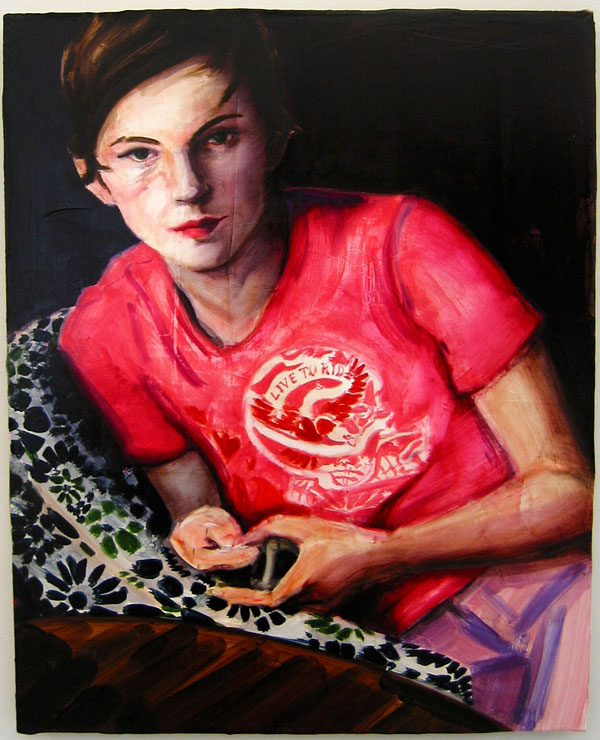Dear Artist,
If a painter were to tap the principles in William Zinsser‘s book, On Writing Well, she would follow the rules of clarity, simplicity, brevity and humanity. Zinsser, a feature writer, author, blogger, editor and professor at Yale and the New School was a stickler for a clean message and for sharing himself with his audience. “Whatever I write about, I make myself available,” he wrote. “No hiding.” In painting, the rules apply:
Clarity: Can you recognize yourself in your painting? “Ultimately, the product any writer has to sell is not the subject being written about, but who he or she is,” wrote Zinsser. “I often find myself reading with interest about a topic I never thought would interest me — some scientific quest, perhaps. What holds me is the enthusiasm of the writer for his field.” Film director Jill Soloway agrees. “Don’t be like anyone else. Find your voice, your script, your rhythms.” Is there a way you can be more clear?
Simplicity: Painter Elizabeth Peyton’s decades-long focus has been the small-scale portrait. She paints her friends and boyfriends, often sitting or sleeping — a cast of characters in her social and emotional life. Peyton unapologetically uses photography as reference and pays little attention to lighting. Her “thing” is recognizable in its strength and weakness, her treasure the washy, cool, drippy, remote, Polaroid-esque handling. Examine what you’re leaving out of your work and what you’re including, then exaggerate these choices.
Brevity: Richard Schmid’s complex subjects — a tangled garden posy, his wife Nancy slouched with her reading, breakfast and cats — appear from vital, declarative strokes. Without pretense or jumble, with a technician’s élan, Schmid’s love is shared in a poem of essential, descriptive brush-moments.
Humanity: Can you tap into a basic human truth in your painting? Can you share your enthusiasm for this craft, in your craft?
Sincerely,
Sara
PS: “Guard the message with your life. Avoid jargon and big words. Use active verbs. Make the reader think you enjoyed writing the piece.” (William Zinsser)
Esoterica: William K. Zinsser was born in 1922 in New York City. After studying art history at Princeton, editing the school paper and serving in the Army in World War II, he took a job as a feature writer at the Herald Tribune. In 1970 he went to teach writing at Yale, all the while publishing books on whatever interested him: writing, politics, religion, baseball, jazz and Yellowstone National Park. Later he worked for the Book of the Month Club and taught at the New School, and wrote a blog for The American Scholar that won the National Magazine Award for digital commentary. Among his writing tips, Zinsser dove deeply into the meaning of an artist’s authorship. He said that he didn’t find his own writing voice until he was in his 50s, when he wrote On Writing Well at the urging of his wife, Caroline. First published in 1976, Zinsser’s how-to on the craft of writing went on to sell 1.5 million copies. William Zinsser died on May 12, 2015 at the age of 92.
[fbcomments url=”http://clicks.robertgenn.com/on-painting-well.php”]

Passage of Time mixed media 22 x 30 inches |









12 Comments
Wonderful to read this, thank you Sara. And thank you for introducing me to William K. Zinsser. A new friend.
clarity, simplicity, brevity and humanity – i like those words applied to painting as well as writing. Only wish I could apply them to my painting and writing, and in general, to my life.
Great insights on painting well: Incorporating Clarity, Simplicity, Brevity and Humanity. To me the “basic human truth in my own work” is probably the harder one to realize and practice. Perhaps striving to live life well is the start.
It’s interesting to see the commonality between painting and writing. I expect that the advice is really excellent regardless of which art you choose to express yourself. It’s true that what makes art is what the artist contributes of him or herself.
I worked as a photojournalist 31 years and the best advice I ever got was from John Davidson, the director of photography at the Dallas Morning News. He told me, “It’ s not what you put into a photograph that makes it good, it’s what you leave out.”
Inspired by Rick Steves, the travel writer, I recently read Zinsser’s books, On Writing Well and Writing to Learn. Steves said Zinsser’s books were his how-to-write guide; they are a pleasure to read. The author’s enthusiasm shines through. That’s what we need for whatever we do.
I picked up a copy of Mrs Stevens hears the Mermaids Singing by May Sarton, whom I knew nothing about. I was at my first session at Haystack School of Crafts in Maine. Reading her words about being a writer, I heard messages I needed to hear about being an artist. Thus began a life long love of her work.
Great article by Sara – “Can you tap into a basic human truth in your painting?”
http://mirkov-popovicki.blogspot.ca/
yeah artis do make their art look like him or her self form time to time. We are out cheapest model. Enthusiasm can be hard for others in bland jobs. It is effortless with creative writers and artists.
I love this comparison between writing and art. I should really pin the advice on my wall to read daily! Especially loving the comment about humanity; sharing yourself and your love of art with your viewers. Now what are the basic human truths I want to share? How freeing. In writing I can see how simplicity and brevity are really two different things. But in art it seems like the two words share the same purpose. This letter will keep me musing….
Wonderful thoughts
I was a successful journalist for 30 years and then slipped into mural painting professionally with unexpected ease. I have since learned there is indeed a kinship between writing and painting. My advise to all writers. Try painting. You may be pleasantly surprised.